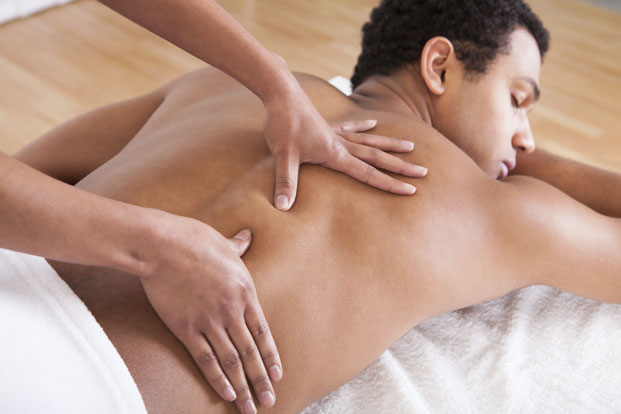Everyone loves to have their bodies massaged. It’s usually done in a slightly cool, dark room, often accompanied by music and scents designed to relax. It’s a moment when you can let the cares of the world go and just relax as you’re kneaded into a blissful state.
A study published in Science Translational Medicine, a publication of the American Association for the Advancement of Science, the world’s largest nonprofit dedicated to advancing science for the benefit of people, has good news about massage benefits. They report that massage therapy during the physical rehabilitation of skeletal muscle “appears to be clinically beneficial by reducing inflammation and promoting mitochondrial biogenesis.”
In layman’s terms, that means it reduces or relieves pain in injured muscles and helps you heal.
Most people intuitively know that a massage helps them recover from stress and can benefit some injuries, which is why you see so many professional athletes mending the wear and tear of their demanding jobs by getting a brisk rubdown. Not only does it release positive endorphin chemicals and relieve stress, but also sore muscles can break down lactic acid and release it to be excreted as waste.
Humans are creatures that respond to stimulus, so anything that calms the body will generally create a feel-good effect in the regions of the brain that are designed to promote relaxation and sleepiness. The oil and music are bonuses to the human touch, helping to bring you back to the womb in a figurative way. Think of it as a form of meditation, which many researchers believe helps sharpen the brain and brings focus.
Massage for the Masses
These good benefits underline why massage is big business. The American Massage Therapy Association, which is a non-profit advocate for massage’s many benefits and is composed of its practitioners and businesses, says $12 billion was spent on massages in 2014 alone. There are an estimated 32 million Americans who have laid on the table during 2013-2014, the period measured by the AMTA.
AMTA research estimates the massage therapy industry’s total dollar volume at $11.7 billion in 2014, representing more than 300,000 licensed therapists and students. That’s a lot of rubbing over a year.
Massage comes from the French word for “friction of kneading,” which is what your body experiences when trained hands are applied. The art of massage dates back thousands of years, and representations of the art are captured in Egyptian hieroglyphics and Chinese scrolls. Massage is truly a universal art, and its benefits have been enjoyed for centuries before our time.
What kind of massage should you seek? The most popular is the Swedish massage, which is a forceful, deep kneading of your aching muscles designed to induce the ultimate state of relaxation.
You can also enjoy the Japanese version, Shiatsu, which uses finger pressure on various body points, much in the style of acupuncture. The idea is to relieve the blockages for the rivers of energy that follow through your body, restoring the balance of yin and yang that is so vital to good human health and mental alertness.
Thai massage, in which the masseuse moves body parts around – like yoga without the work — to achieve the rubdown, is growing in popularity. It’s a spinoff of Shiatsu, and usually requires the massage recipient to take a quick shower following the session. There are also hot rocks massages, which use warm stones to relax, and special pregnancy massages, which can be used to induce fertility in those having trouble conceiving or to soothe tired muscles in those already pregnant.
Real Health Benefits
The biggest benefits of massage are stress relief and pain reduction. Doctors have recommended massages for cancer-related pain, low back pain, osteoarthritis suffering, post-operative pain, the hard-to-define symptoms of fibromyalgia and carpal tunnel syndrome, among many treatments. The massage isn’t designed to cure, but many patients report that they bring enormous relief, and the therapeutic value of believing that something can help you is positive.
A brisk massage can help the elderly and infirm stay limber. As age-onset arthritis arises, massage therapists can help battle stiff joints by cracking and pulling, helping to relax muscles and generally stimulating areas that may not get much action in normal, day-to-day living.
Some of the actual conditions that massages can help:
1) Fibromyalgia – This chronic painful condition manifests anywhere on the body and often brings with it a painful response to any pressure. It’s hard to diagnose, but the calming effects of a good massage seem to help sufferers endure.
2) Insomnia – If you’re having trouble falling asleep, one of the best treatments you can undertake is to reduce stress. That’s the essence of a good massage, and many recipients report that they fall asleep faster and sleep more soundly after a good rubdown.
3) Sports injuries – Many injuries are caused by the high-torque strains put on the body by active competitions. Manipulating the muscles and bones back into proper alignment is a great way to help the body restore strength and lessen insult and injury to various body parts.
4) Digestive issues – Although most people do not get their stomach rubbed during a massage, stimulating the rest of the body seems to work wonders for improving the passage of food through the digestive tract.
5) Sexual disorders – Performance anxiety is one of the leading causes of erectile dysfunction in men. Relaxation after a brisk massage puts you in different mood, and sometimes the rivers of energy flowing through your body react in a very positive manner to the improved disposition and blood flow.
Much remains to be studied about the benefits of massage. But one thing is absolutely certain – after getting a professional rubdown by a licensed masseuse, you’ll feel better than when you came into the studio. That’s one bit of science that doesn’t need to be studied rigorously.

Leave a Reply